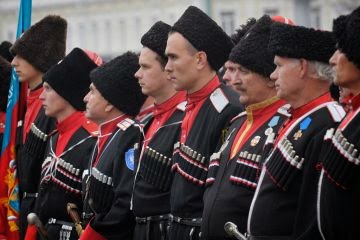
Cossackia Re-Emerges as an Issue
By Paul Goble
Few subjects were addressed so furiously by Soviet propagandists as any mention of Cossackia, or “Land of the Cossacks,” in the United States’ 1959 law on captive nations. The Soviets referred to US support for Cassackia as an indication of what they described as the absurdity of support for all the nationalities of the USSR, which, according to Moscow, already lived in a state of “friendship of the peoples.” A major reason Soviet officials attacked the idea of Cossackia was that their reports on it were often picked up by and enjoyed the support of Western analyst and commentators.
On the one hand, many in the West and even more in the Union of Soviet Socialist Republics (USSR) accepted the Hollywood version of the pre-1917 Cossacks as a kind of proto-fascist and anti-Semitic force that deserved to be thrown into the dustbin of history, even though that characterization was inaccurate and tendentious in the extreme. And on the other, more knowledgeable people pointed out that there was no obvious “Cossack land” because there were Cossack communities spread out across the Soviet Union from Ukraine to the Pacific. How, many asked, could one unite them, especially since they were officially a “social stratum” and not a “nationality?”
But three developments since the collapse of the USSR in 1991 have led to the re-emergence of Cossackia as an idea and even a goal. And these developments have been exacerbated by Vladimir Putin’s moves toward the Anschluss of Ukraine’s Crimea and the extent to which that has highlighted divisions among people that many in both Moscow and the West have assumed can be collectively grouped as Russians (sibpower.com/publikaci/sibirskaja-derzhava-i-kazakija-kak-otvet-kremlyovskoi-yekspansi-v-ukrainu.html).
First of all, the Cossacks have re-emerged as a public force. The 12 voiskas or “armies” are not only seeing the coming out of many who never forgot their Cossack roots despite Soviet oppression, but also the emergence of a neo-Cossack movement among Russians who look to the Cossacks as a model of discipline. Second, Moscow has not handled the Cossacks in a sophisticated fashion. As long as the Cossacks are prepared to be an ethnographic curiosity willing to do what the center wants, the Russian authorities tolerate or even support them; but when the Cossacks advance their own agenda, Moscow has been unprepared to meet them even half way. And third, an increasing share of those who call themselves Cossacks say they are not just a “social strata” as Moscow insists but rather a nation in their own right and that they have the right to national self-determination up to and including the formation of their own republic or republics.
Putin’s Crimean adventure has intensified such feelings and made it obvious that an increasing fraction of Cossacks today do not view themselves as part of the Russian nation but rather see themselves as a nation of their own that has rights and is ready to reach out to other nations within and beyond the borders of the Russian Federation to gain support. They may not succeed, but they can no longer be dismissed by anyone as simply figments of their own imaginations or a joke. Instead, they bear watching.




